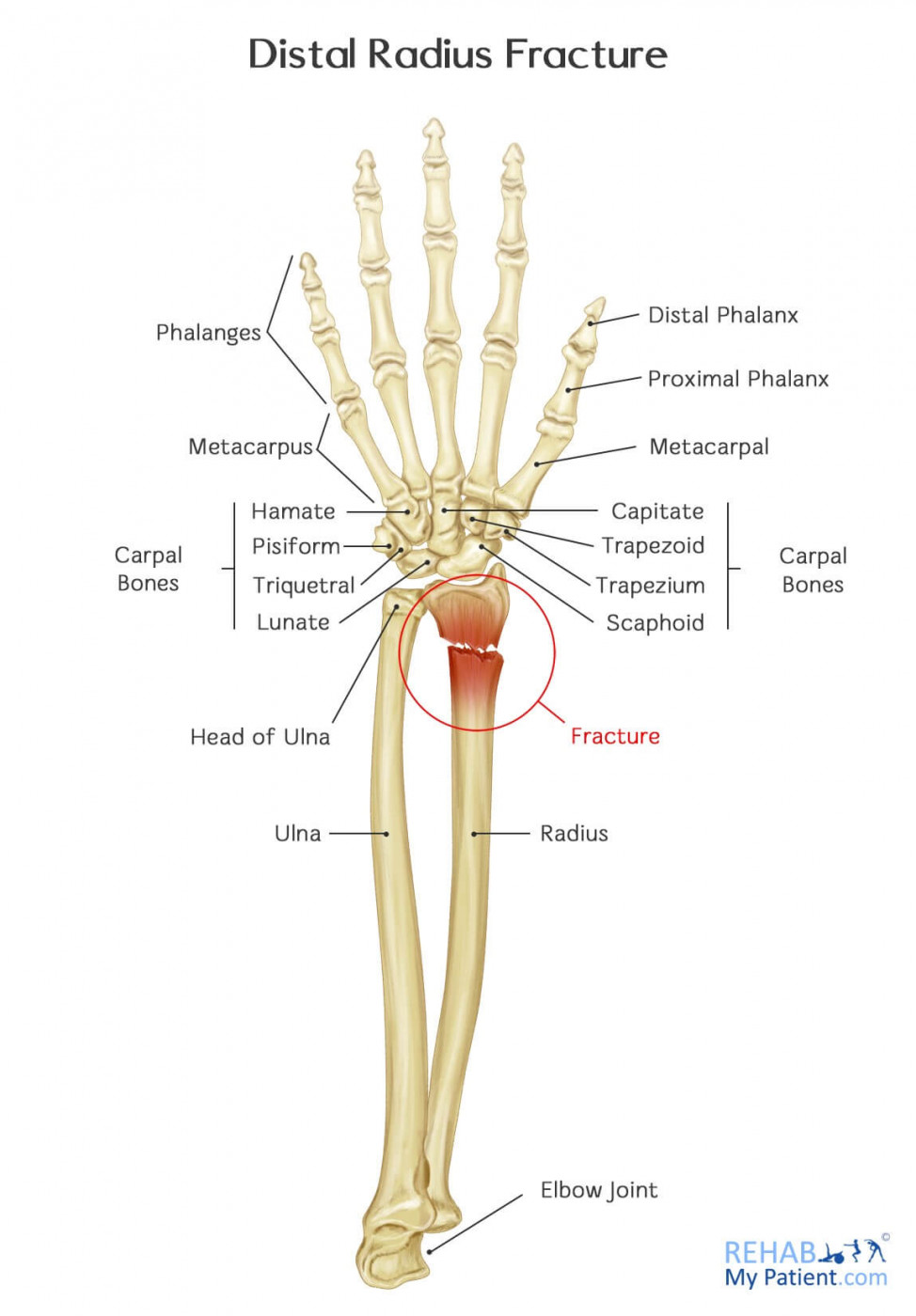Distal Radius Fracture
Posted on 28th Apr 2017 / Published in: Hand/Fingers/Thumb , Wrist

In the forearm, the radius is the larger of the two bones. The distal end is located at the end of the wrist. Fractures of the distal radius happen when the end of the radius bone breaks. It is sometimes simply called a broken wrist. These particular fractures are quite common. The radius is considered to be the most commonly broken bone within the arm, and typically happens after a fall (especially on an outstretched arm).
Distal Radius Fracture Anatomy
Distal radius fractures occur around an inch from the bone’s end. There are a number of different ways in which the break can happen. One of the common types of fractures is referred to as the Colles fracture where the broken fragments of the radius bone end up tilting upward.

Following a fall, you will notice severe pain in your wrist and an inability to bend your wrist without pain. There will likely be significant swelling into the hand and fingers.
The first thing is to get to a hospital for an X-ray. This will accurately diagnose the break, and determine the severity of the break or to see if there is any involvement with other bones.
How to Treat a Distal Radius Fracture:
- Nonsurgical Treatment
If the broken bone happens to be in a decent position, a cast might be applied to allow the bone to heal. If the position isn’t in the right place and end up limiting the use of your arm later on, you might need to have the bone fragments realigned. Reduction involves moving the broken pieces and putting them into their proper places. When the bone is able to be straightened without having to open the skin up, it is termed a closed reduction.
Once the bone is properly aligned, a cast is put onto the arm. Splints are often used for the first few days to provide for a small amount of swelling. Casts are often added about a week later once the swelling has ceased. A cast will often be changed every couple of weeks as the swelling continues to go down and the cast loosens.
Roughly, six weeks after the injury occurs, the cast will be removed and the wrist x-rayed again. Physical therapy starts to improve function and range of motion in the wrist (but can start much earlier depending on the cast used).
- Surgical Treatment for Open Fractures
Surgery is often needed as quickly as possible when it comes to open fractures. The bone and exposed tissues need to be cleaned thoroughly and an antibiotic might be needed to help prevent infection from setting in. Either an internal or an external fixation will be used for holding the bones where they need to be. If the soft tissues are damaged severely, you might need an external fixator.
- Physical Therapy
Physical and manual therapy can be used to reduce swelling, improve mobility and later improve strength. Exercises can be prescribed to do this too. Electrotherapy such as low intensity ultrasound can help speed up bone repair. Therapy tends to be started sooner if surgery has been performed, to prevent wrist stiffness. If there has not be surgery, it is best to have intensive therapy as soon as the cast is off.
Tips:
- Pain associated with vigorous wrist or hand activity is common within the first year after the injury.
- Ache and residual stiffness is expected to occur for around two years, but it can be permanent, especially when it comes to high-energy injuries, in patients that have osteoarthritis and those who are over 50 years of age.
- Stiffness is normally only minor and doesn’t traditionally affect the arm’s overall function.
- Osteoporosis plays a key role in a number of wrist fractures. Those who end up with a fractured wrist should have their bones tested for weakness. This would depend on the age of the patient and how heavy the fall was. I.e. quite innocuous falls in the elderly may be investigated with a bone density scan to check for osteoporosis.
- Most of the time, you won’t have any problems being able to return to all of the normal activities that you once loved before the fracture occurred.
- Make sure you mobilize the wrist and hand as soon as possible following surgery or cast removal to prevent secondary stiffness.

Sign UP
Sign up for your free trial now!
Get started with Rehab My Patient today and revolutionize your exercise prescription process for effective rehabilitation.
Start Your 14-Day Free Trial